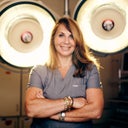Is it at all possible to get a lower facelift without using a horizontal vector? Are there any lower facelifts that use non-horizontal/vertical vector for skin repositioning? I'm a bit terrified of having my lips elongated horizonatlly (as one plastic surgeon was kind enough to simulate for me)--please tell me there are other ways of going about this!
Answers (23)
From board-certified doctors and trusted medical professionals
Dr. Farhan Taghizadeh, MD

Dr. Farhan Taghizadeh, MD
Board Certified Facial Plastic Surgeon
Answer
Dr. Matthew Richardson, MD

Dr. Matthew Richardson, MD
Board Certified Facial Plastic Surgeon
Answer
Dr. Michele A. Shermak, MD

Dr. Michele A. Shermak, MD
Board Certified Plastic Surgeon
Answer
Dr. Evan Ransom, MD, FACS

Dr. Evan Ransom, MD, FACS
Board Certified Facial Plastic Surgeon
Answer
Dr. Andres Bustillo, MD, FACS
Dr. Andres Bustillo, MD, FACS
Board Certified Facial Plastic Surgeon
Answer
Dr. Richard G. Schwartz, MD

Dr. Richard G. Schwartz, MD
Board Certified Plastic Surgeon
Answer
Dr. Larry S. Nichter, MD, MS, FACS

Dr. Larry S. Nichter, MD, MS, FACS
Board Certified Plastic Surgeon
Answer
Dr. James C. Marotta, MD

Dr. James C. Marotta, MD
Board Certified Facial Plastic Surgeon
Answer
Dr. Stephen Prendiville, MD

Dr. Stephen Prendiville, MD
Board Certified Facial Plastic Surgeon
Answer
Dr. Brent Moelleken, MD

Dr. Brent Moelleken, MD
Beverly Hills Plastic Surgeon
Answer
More Lower Facelift Questions
See all Lower Facelift Q&AWE SEND PRETTY
EMAILS
What’s trending? Who’s turning heads? Which TikTok myths need busting? We’ve got you. No fluff, no gatekeeping—just real talk. Get our free, unfiltered newsletter.